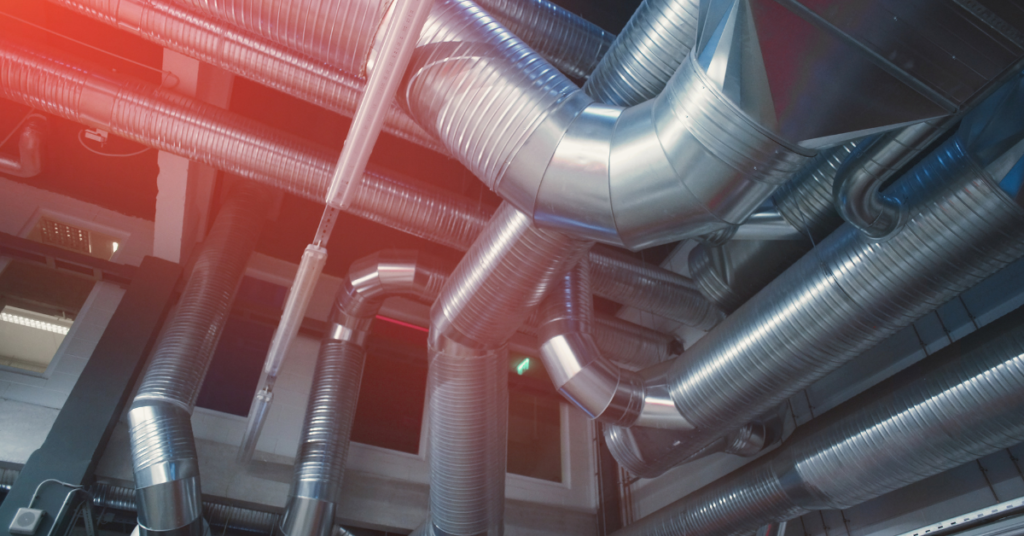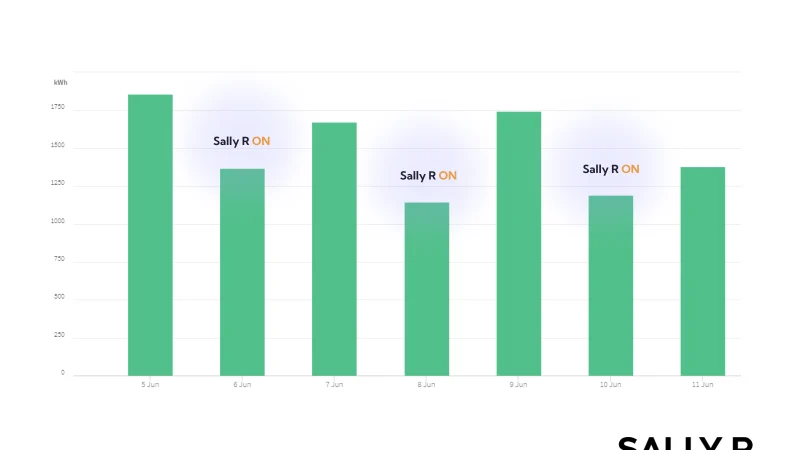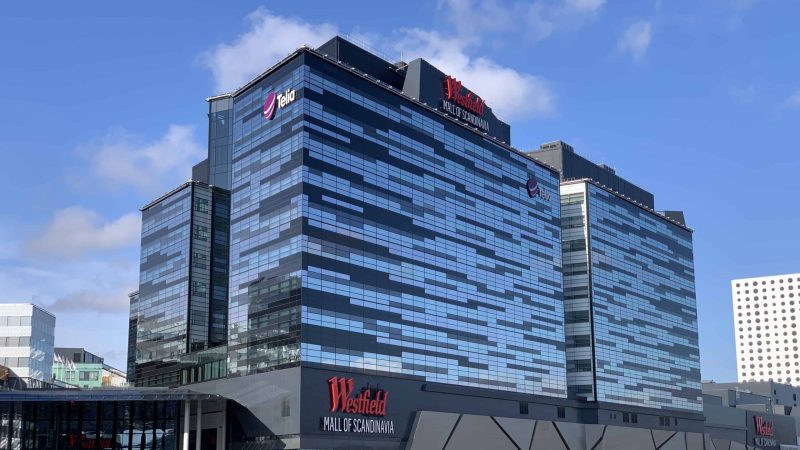Your building’s ventilation system plays a crucial role in ensuring the health and comfort of its occupants. However, it’s essential to evaluate whether your current ventilation system is up to the task.
According to research from Harvard T.H. Chan School of Public Health, the air quality within an office can significantly impact employees’ cognitive functions. This includes response times and ability to focus, as well as affecting their productivity.
When it comes to ensuring a healthy and productive indoor environment, your ventilation system plays a pivotal role. Yet, not all ventilation systems are created equal. To optimize your indoor air quality, you need to ask the right questions and make informed choices.
In this blog post, we’ll explore six crucial questions you should be asking about your ventilation system to ensure it’s up to the task. From air quality measurement to energy efficiency and scalability, understanding these factors can lead to a healthier and more optimized indoor environment for everyone.
6 questions to ask of your ventilation system:
1. Does it measure the quality of air?
What is ‘good air quality? Measuring indoor air quality is about:
- Ensuring there is adequate ventilation and distribution of clean air
- Making sure contaminants are controlled.
- Making the temperature and humidity level comfortable for everyone.
A lot of ventilation systems have been designed with the perception that ‘outdoor air is good air’. Ventilation systems pull in air from the outside and circulate that throughout the building. But those systems very rarely monitor that fresh air for quality.
What are the benefits of monitoring air quality:
- Clean air that is safe to breathe
- Healthy people
- Energy savings
- Green building certifications
Erik Vallgårda, Business Area Manager for Sally R, who provide real estate and all types of properties an easy, scalable cloud solution for securing healthy and safe indoor air quality, says most systems only control ventilation with a standard air flow rate.
“This keeps a constant air exchange rate in order to ventilate a building, and it only measures and controls the temperature of the air,” says Erik.
“This is based on the perception that the outdoor air is good, and if enough air from the outside is brought into the property, the air quality inside will be good.” But if outdoor air can be polluted, that means there are emissions in the building as well. This is why it’s important to constantly measure the air quality inside and you need an optimized ventilation system that will do that constantly.
2. Does it use too much energy?
According to the International Energy Agency (IEA), ventilation and air conditioning will soon use about 13% of all electricity worldwide, and produce 2bn tonnes of CO2 a year. Most general ventilation systems are typically running full flow all the time and are not optimized to work efficiently. If there are extra pre-defined parameters that have to be added into the system, whether that is to check CO2 levels or increase ventilation to a larger part of the building, this might lower the energy, but it is costly and not at all scalable to implement. This energy consumption is not good for the environment, as the emissions hurt the climate around us all.
Of course, there are solutions that tackle energy consumption, but they have drawbacks when it comes to air quality and economy of operation. One ventilation solution, demand controlled ventilation (DCV), is a method of using monitors to assess real-time air quality data and introduce variable amounts of fresh air “on-demand” based on the number of people in the building. However, they can’t handle multi-parameters of air quality and they are very costly to implement.
“Adding more parameters into these pre-defined systems adds more and more complexity and generally creates problems for the operation,” says Erik Vallgårda
3. Does it clean the air of harmful substances?
In today’s post-pandemic world, more people are aware of just how important it is to have good quality air in a building. But it’s not just viruses we should be concerned about, bad air quality and air pollution can actually end up causing serious illnesses too. Unfortunately, many people still think opening the window is enough to have clean air in a room, when this simply isn’t the case. In fact, it can make it worse.
“If you open a window, you’re just pulling all the cold air in and everyone will be cold,” says Erik.
“If this is in a school, this can affect productivity and the learning experience. And it can also expose them to other types of emissions from outside. If the building is close to an industrial centre, you could be pulling in harmful emissions through the window.”
But that doesn’t mean that every ventilation system is prepared to filter out harmful substances either. In fact, it’s just the opposite. A lot of ventilation systems only filter out basic dust particles, but are generally limited when it comes to anything else.
“The solution is not just to monitor the air, although it is a good first step, you also need to understand what you monitor. And you need to have the right measures in place to clean the air of anything that could be harmful.”
4. Does the system need to be constantly maintained?
Upon installation, ventilation systems are pre-programmed to do exactly what they need to do.
Erik says, “A controller, like a small computer, is installed with the system. The way the system is run is coded into this computer. It controls how the system should run, what the airflow should be in and out of the building, the temperature and so on. All parameters must be pre-programmed into that small computer. “
Not only is the set-up a long, arduous process, but if you want any upgrades to the systems, they also have to be completed individually, as it is not optimised. There is no simple integration and functionality built-in, and the system engineers need to be brought in to complete the job. Time and money are wasted doing this.
5. Will the system cause complaints from tenants?
The more complex a system gets, and the more parameters that are added in, the more likely it is that there will be issues with the system. This increases the likelihood of unhappy tenants. But the air quality problem will also undoubtedly come into play.
“If the system doesn’t measure the air quality, there won’t be any feedback from that into the system, so it will just continue to run the same way. It won’t be until you get complaints from tenants in the building about one area being too cold, and another too hot, that you will know something is wrong.”
This creates a lot of unnecessary administrative tasks for property owners who have to deal with complaints and paperwork. This could easily be avoided if there was a measurement and feedback system already included.
6. Is the system scalable?
As the ventilation system is pre-programmed, adding extra parameters adds to the complexity of the system. Most of the time, these pre-programmed systems can only be changed by the engineers who created them. This means you can become locked-in to the system and you could lose your data if you tried to switch.
“Once everything is installed with all the parameters you want included, you have a good solution in one building. But if you have any other buildings, you need to start from scratch and programme the same things there. This takes a lot of time and money to do them all individually.”
Current ventilation systems are rarely scalable as the parameters are all custom-made by a programmer on-site. The changes in application and system processing demands can decrease its performance and you can’t change it to suit your own needs without going through the programmer. Having an open-source system would solve a lot of problems.
These reasons are why you need an optimized ventilation system. A better solution, such as Sally R, can lower energy consumption without compromising air quality, and find optimal settings to reach a desired air quality. You need a ventilation system that will measure indoor and outdoor air quality, work with every open automation platform on the market, and maintain the system with less time spent on manual adjustments.
Create a healthier, more optimized indoor environment and spend less time on outdated systems.











